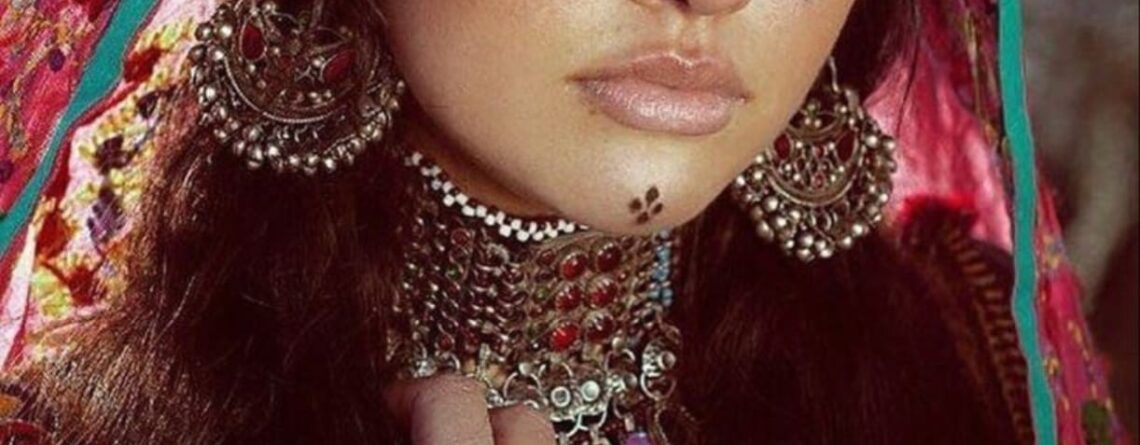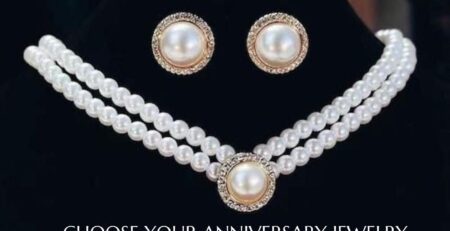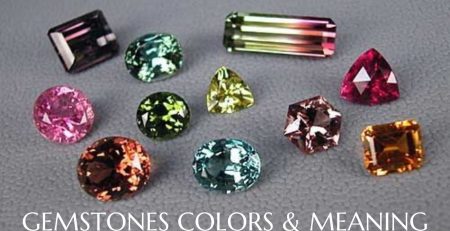AFGHANI JEWELRY TREND IN PAKISTAN
Introduction:
Afghani jewelry captivates jewelry enthusiasts and cultural historians alike with its rich cultural heritage and distinctive artistry. The current trend in Afghani jewelry showcases the enduring legacy of traditional craftsmanship and the evolving tastes of modern fashion.
This article explores the intricate world of Afghani jewelry, focusing on its tribal components, unique techniques such as cutwork, enamel work, and the allure of hand-painted designs.
The Essence of Afghani Jewelry:
Characterized by bold, intricate designs, Afghani jewelry reflects the region’s diverse cultural influences. Historically, these pieces have served not only as adornments but also as symbols of status and identity. Artisans typically craft this jewelry from a variety of materials, including silver, gold, precious stones, and beads.
Tribal Components and Significance:
In Afghanistan, tribal jewelry deeply roots itself in the nomadic cultures of the Pashtun, Hazara, and Uzbek communities. Each tribe boasts a unique style, evident in the designs and symbols of their jewelry. These pieces often embody significant cultural meanings, representing beliefs, traditions, and stories passed down through generations.
Cutwork and Enamel Work:
The use of cutwork, a technique that involves intricately cutting metal to create elaborate patterns, stands out as one of the most distinctive features of Afghani jewelry. This technique demands a high level of skill and precision, turning each piece into a work of art.
Another popular technique, enamel work, fuses colored glass powder onto the surface of metals, creating vibrant and colorful designs. This method gives the jewelry a unique dimension, making it notable for its vivid hues and glossy finish.
Hand-Painted Designs:
Hand-painted designs, though less common, add an equally stunning aspect to Afghani jewelry. Often drawing inspiration from natural elements, traditional motifs, and even calligraphy, these designs bring a personal touch to each piece. The art of hand-painting in jewelry makes each item unique, often narrating a story or symbolizing traditional folklore.
Contemporary Trends and Global Appeal:
Today, Afghani jewelry transcends traditional wear and has carved a niche in contemporary fashion. Designers blend traditional techniques with modern aesthetics, creating pieces that captivate a global audience. This fusion has spurred a surge in popularity, leading to Afghani jewelry’s showcase in international fashion shows and its adoption by celebrities.
The Artistic Journey of Afghani Jewelry:
The journey of Afghani jewelry, mirroring the intricacy of its designs, has evolved over centuries. The country’s complex history, diverse ethnic groups, and their interactions with neighboring cultures have shaped this evolution. Afghani jewelry represents not just a fashion statement but a rich tapestry of Afghanistan’s history and cultural diversity.
Symbolism and Storytelling:
Symbolism imbues each piece of Afghani jewelry. Common motifs in Afghani designs, such as the moon or stars, symbolize protection and guidance. Similarly, depictions of animals or birds in other pieces represent various qualities like strength, wisdom, or freedom. This symbolism transcends mere decoration, telling stories, conveying messages, and connecting the wearer to their heritage.
Materials and Crafting Techniques:
Traditional Afghani jewelry incorporates materials like silver, lapis lazuli, turquoise, and coral. Artisans prefer silver for its malleability and durability. Lapis lazuli, a deep blue semi-precious stone, stands as a hallmark of Afghani jewelry, reflecting the country’s rich mineral deposits. The crafting process, often painstaking and time-intensive, involves entire families and communities, with skills passed down through generations.
The Role of Jewelry in Afghan Society:
In Afghan society, jewelry serves as more than an adornment; it acts as a cultural identifier and a form of wealth. It plays a crucial role in rituals and social customs. For instance, brides wear intricate jewelry pieces during weddings, each signifying blessings and hopes for their new life. Similarly, people often give jewelry as gifts during significant life events, symbolizing good fortune and protection.
Modern Interpretations and Global Influence:
In Afghan society, jewelry not only adorns but also acts as a cultural identifier and a form of wealth. It plays a crucial role in rituals and social customs. For example, during weddings, brides adorn themselves with intricate jewelry pieces, each symbolizing blessings and hopes for their new life. Likewise, people frequently give jewelry as gifts during significant life events to symbolize good fortune and protection.
Conclusion:
The Afghani jewelry trend fascinatingly intersects history, culture, art, and fashion. It mirrors the Afghan people’s resilience and creativity, offering a window into their rich cultural heritage. As this jewelry secures its place in the global fashion scene, it carries stories of the past, celebrates the present, and anticipates a future where traditional art forms continue to thrive and evolve. Every sold and worn piece deepens the appreciation for the artistry, symbolism, and cultural significance that render Afghani jewelry truly timeless.











